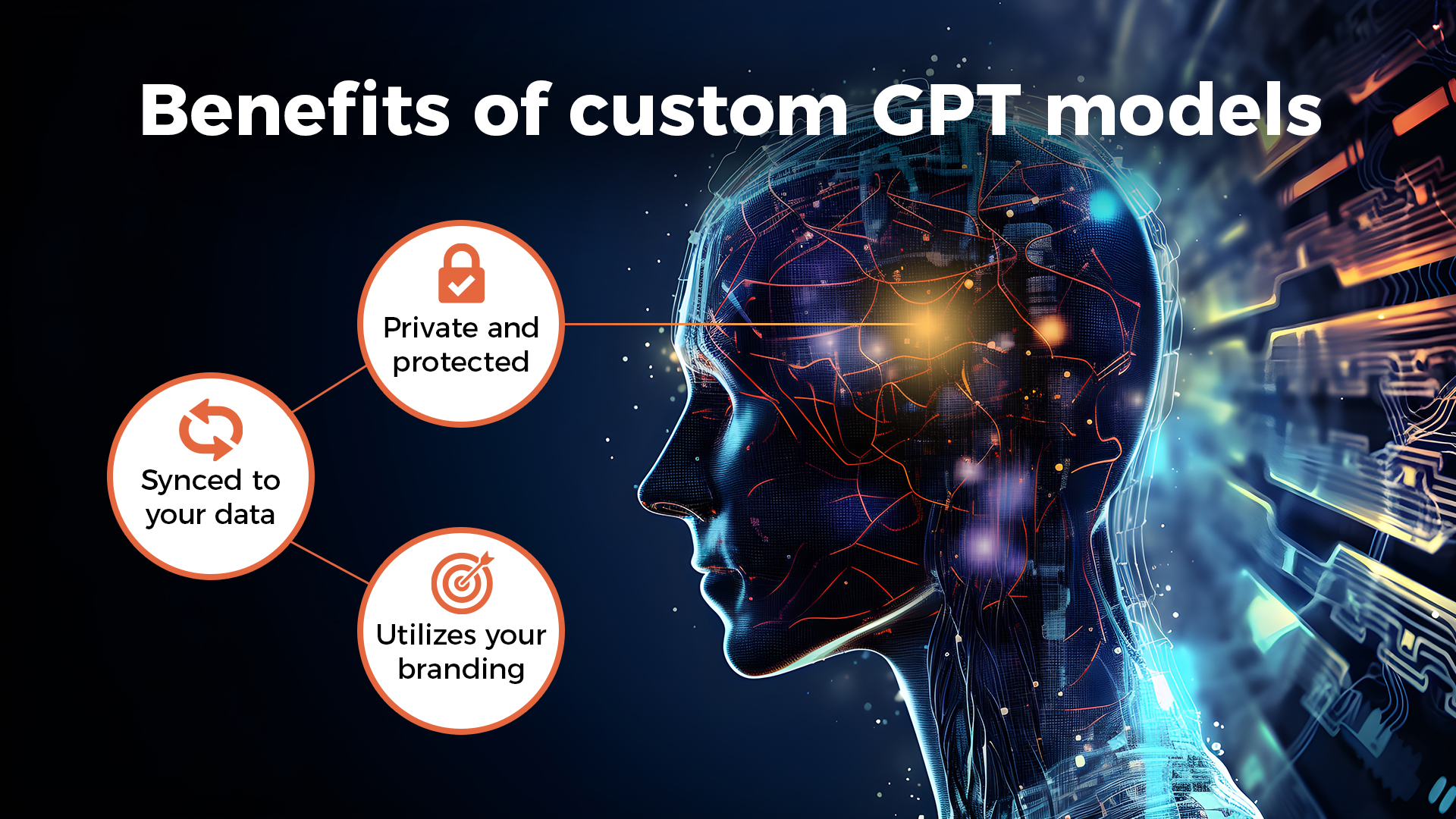How to Train a Custom GPT for Your Business
Introduction
In 2025, businesses are no longer asking whether to use AI—they’re asking how to make AI work specifically for their needs. One of the most powerful ways to do that is by training a custom GPT tailored to your business. From handling customer queries to drafting reports and creating marketing content, a fine-tuned GPT can become your virtual employee.
But how do you train a GPT model for your own business use? This guide walks you through the key concepts, tools, processes, and benefits of training a custom GPT using your own data.
Why Train a Custom GPT?
Large pre-trained models like OpenAI’s GPT-4o are powerful but general-purpose. Training or fine-tuning them with your domain-specific data allows you to:
-
Improve accuracy and relevance in responses.
-
Reflect your brand voice and tone.
-
Handle industry-specific terminology and workflows.
-
Maintain data privacy by keeping everything internal.
Examples:
-
A real estate firm can train GPT to understand lease terms, listings, and local laws.
-
A medical clinic can have a GPT assistant trained on patient care protocols.
-
A retail brand might fine-tune GPT to generate product descriptions or handle support chats.
Step 1: Define the Use Case
Before you begin, ask:
-
What problem are you solving?
-
Who will use the model?
-
What tasks should it perform (e.g., content creation, customer support, data analysis)?
Common Business Use Cases:
| Use Case | Description |
|---|---|
| Customer Service | Automate FAQ, ticket replies, and live chat |
| Marketing | Auto-generate blog posts, social captions, emails |
| Sales | Write personalized pitches or follow-ups |
| HR | Draft job descriptions, respond to employee queries |
| Legal | Summarize contracts, highlight risks (with caution) |
Step 2: Gather and Prepare Your Data
Data is the most critical piece of the puzzle. GPT models learn patterns from the textual information you feed them.
Types of Data You Can Use:
-
Internal documents (e.g., FAQs, guides, SOPs)
-
Emails, chat transcripts
-
Product or service descriptions
-
Knowledge base articles
-
Historical support tickets
Data Cleaning Tips:
-
Remove irrelevant or outdated content
-
Anonymize sensitive or personal data
-
Break down large documents into clear prompt-response pairs
-
Make formatting consistent (e.g., avoid unnecessary symbols)
Step 3: Choose a Training Method
Depending on your goals, you can take one of the following approaches:
1. Fine-Tuning (Most Powerful)
-
Modifies the base model’s parameters using your data.
-
Ideal for changing behavior or teaching domain-specific language.
🔧 Best For: Businesses with lots of labeled training data and technical resources.
2. Prompt Engineering (Quick Setup)
-
Uses well-crafted prompts to steer responses from the base GPT without changing its core.
-
Great for fast deployment and prototyping.
💡 Best For: Non-coders or light customization needs.
3. Embedding with Vector Search
-
Store your documents in a vector database and use semantic search with GPT.
-
When users ask something, the most relevant document chunk is passed to GPT for context.
🧠 Best For: Knowledge bases, search apps, chatbots.
Step 4: Select Tools & Platforms
🧰 Top Platforms to Train a Custom GPT:
| Platform | Features | Ideal For |
|---|---|---|
| OpenAI Fine-Tuning API | Train custom GPT-3.5/4 models using JSONL files | Mid-large businesses |
| Microsoft Azure OpenAI | Enterprise-grade compliance & model tuning | Enterprises |
| Hugging Face | Open-source models (LLaMA, Falcon) & training tools | Developers, researchers |
| LangChain + Pinecone/Weaviate | RAG (Retrieval-Augmented Generation) setups | Chatbots & internal tools |
| ChatGPT Custom GPTs | No-code version of tailored GPTs with tools & instructions | Beginners, SMBs |
Step 5: Format Your Data for Training
For fine-tuning, data is usually formatted in JSONL (JSON Lines):
-
Keep the prompt concise
-
Ensure the completion is relevant and to the point
-
Aim for at least 500–1,000 prompt-response pairs for decent performance
Step 6: Train or Deploy the Model
Fine-Tuning with OpenAI (Example):
-
Create an OpenAI account and get API access.
-
Format and upload your JSONL data.
-
Use CLI or API:
-
After training, use the custom model by calling its ID.
RAG Deployment (for GPT + Your Docs):
-
Use LangChain to split your data into chunks.
-
Store embeddings in a vector DB like Pinecone.
-
Retrieve relevant chunks at runtime and pass them to GPT via prompt.
Step 7: Test and Iterate
Once your model is live:
-
Ask domain-specific questions
-
Check if answers are correct, clear, and on-brand
-
Collect user feedback and refine prompts or data
-
Re-train with new data periodically to stay updated
Step 8: Monitor and Maintain
Use logging and analytics to see:
-
Most asked queries
-
Accuracy of responses
-
Drop-offs and failure rates
Implement feedback loops so the model keeps improving over time.
Challenges & Considerations
| Challenge | Solution |
|---|---|
| Limited Data | Use prompt engineering or collect more labeled data |
| Privacy Concerns | Anonymize data, use self-hosted models |
| High Cost | Use open-source models or smaller GPT variants |
| Misleading Output | Add system instructions, do regular audits |
| Security | Ensure compliance with GDPR, HIPAA, etc. |
Benefits of a Custom GPT for Business
✅ Reduced response time for customers
✅ Lower operational costs
✅ Personalized user experiences
✅ Scalability across departments
✅ Competitive edge in AI adoption
Future of Custom GPTs in Business (2025+)
In 2025, custom GPTs are:
-
Becoming autonomous agents that can act, not just answer.
-
Integrating with business tools like CRMs, ERPs, and Slack.
-
Available via no-code platforms for non-developers.
-
Supporting multi-modal inputs like text, voice, and images.
The sooner your business adopts one, the sooner you ride the AI-first wave of productivity and personalization.
Final Thoughts
Training a custom GPT for your business is not just a tech experiment — it’s a strategic move toward the future of work. Whether you’re a startup founder or a corporate innovator, taking control of AI by tailoring it to your needs gives you superhuman efficiency and a unique competitive edge.
With the right data, tools, and goals, you can build a GPT that knows your business better than most employees do.
How to Use ChatGPT to Write Emails, Essays, or Code (2025 Guide)
What is the Internet of Things (IoT) and How It’s Used in 2025
How to Build Your First AI Model in Python: A Simple Guide (2025)





